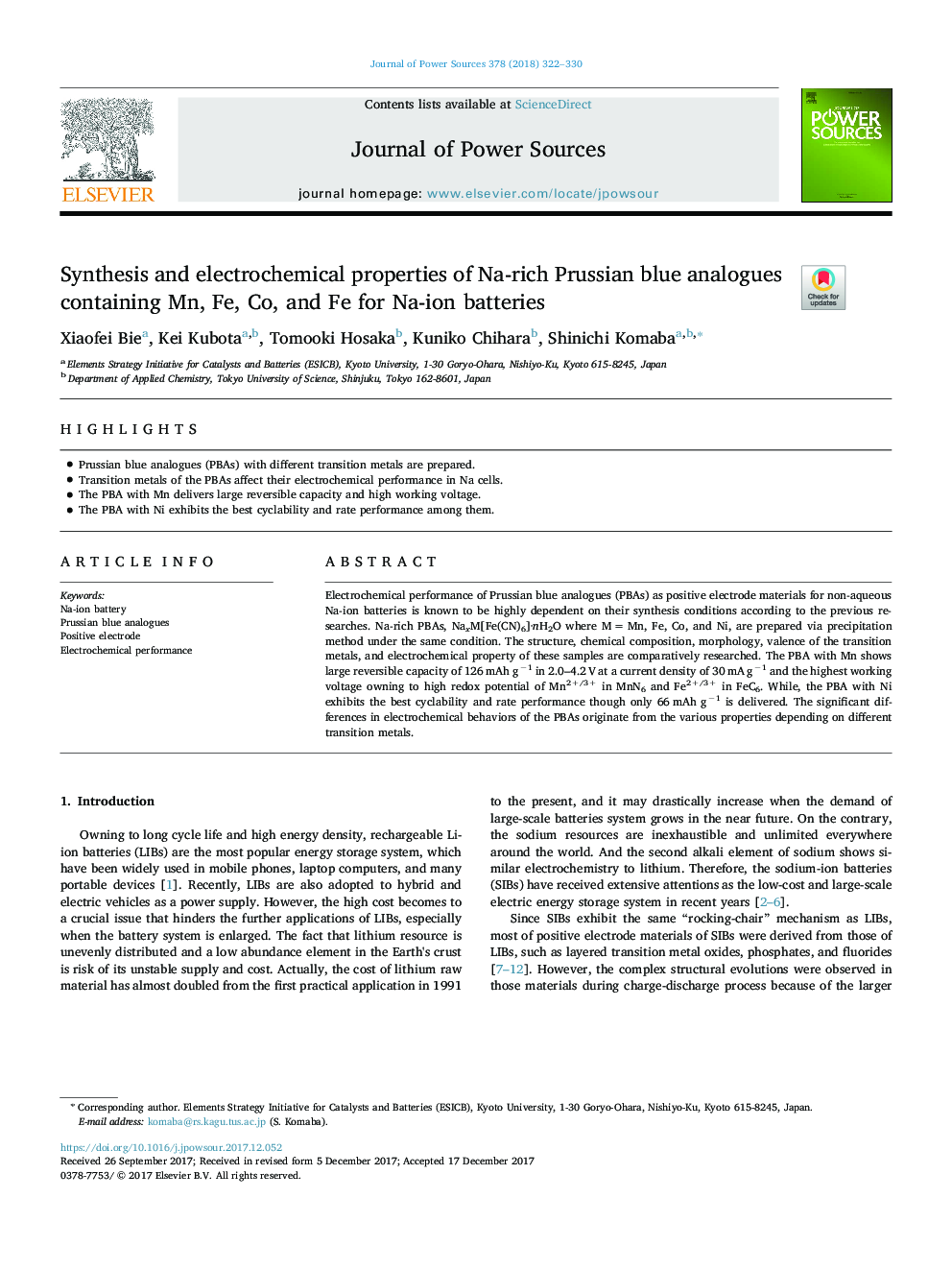| Article ID | Journal | Published Year | Pages | File Type |
|---|---|---|---|---|
| 7725832 | Journal of Power Sources | 2018 | 9 Pages |
Abstract
Electrochemical performance of Prussian blue analogues (PBAs) as positive electrode materials for non-aqueous Na-ion batteries is known to be highly dependent on their synthesis conditions according to the previous researches. Na-rich PBAs, NaxM[Fe(CN)6]·nH2O where Mâ¯=â¯Mn, Fe, Co, and Ni, are prepared via precipitation method under the same condition. The structure, chemical composition, morphology, valence of the transition metals, and electrochemical property of these samples are comparatively researched. The PBA with Mn shows large reversible capacity of 126â¯mAh gâ1 in 2.0-4.2â¯Vâ¯at a current density of 30â¯mAâ¯gâ1 and the highest working voltage owning to high redox potential of Mn2+/3+ in MnN6 and Fe2+/3+ in FeC6. While, the PBA with Ni exhibits the best cyclability and rate performance though only 66â¯mAh gâ1 is delivered. The significant differences in electrochemical behaviors of the PBAs originate from the various properties depending on different transition metals.
Related Topics
Physical Sciences and Engineering
Chemistry
Electrochemistry
Authors
Xiaofei Bie, Kei Kubota, Tomooki Hosaka, Kuniko Chihara, Shinichi Komaba,
